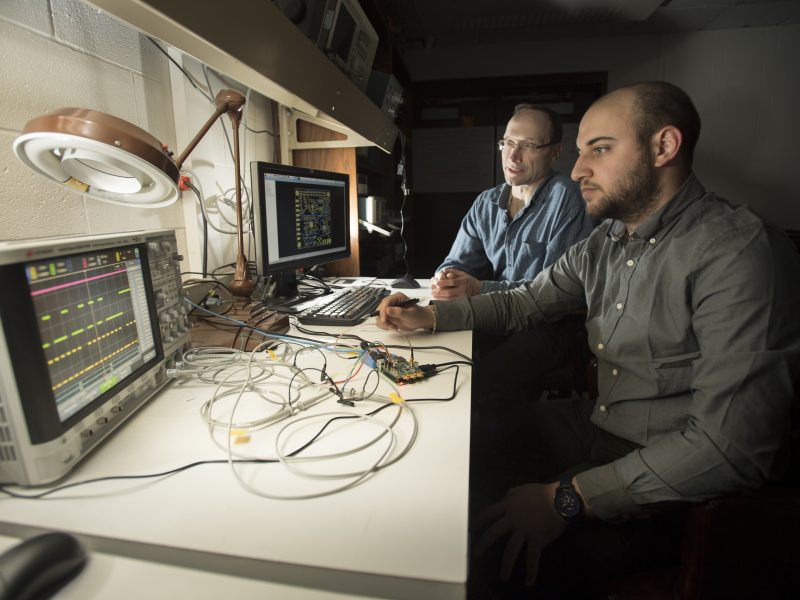Crowded Devices: RF Coupling and Multiple Antennas

As wireless devices shrink and the features expand, more sensors, transmitters, and receivers are forced to share a very small area. This antenna and radio frequency (RF) coupling typically leads to undesirable results, such as signal interference and increased electromagnetic radiation exposure. At the Notre Dame Wireless Institute, our research approach is to challenge conventional wisdom. In other words, we are seeking to turn a perceived disadvantage into an effective advantage by researching the benefits of antenna coupling and exploiting the presence of multiple transmitters for remote sensing applications, increased device performance and decreased electromagnetic radiation exposure. Our research into exploiting the traditional drawbacks of MIMO (multiple-in, multiple-out) systems has promising implications, not only for handheld wireless devices but also for larger mobile platform scenarios, ranging from military vehicles in the battlefield to aircraft carriers at sea.
Further, this research effort advocates the design and analysis of low-complexity high-bandwidth multiport matching networks to compensate for coupling in radio-frequency transmitters, receivers, and circuits. The ideal multiport matching network inserted between independent sources and coupled loads compensates for the coupling by eliminating both reflected power and also power transferred from one source through a load to another source.
Among the design limitations of such networks, complexity and bandwidth are usually the most important, especially for compact wideband wireless communication devices. These limitations have not been well studied, and this effort includes an integrated two-pronged exploration of these issues in microwave and millimeter-wave matching networks. The first prong uses network-theoretic analyses to explore systematic, unified, design methods that work for any load structure. The effort also seeks standardized limits against which network performance in both complexity and bandwidth can be measured. The second prong couples an experimental program to both validate as well as inform the modeling choices made in the design and optimization of the matching networks.
Practical issues such as undesired parasitic coupling and electromagnetic discontinuities in distributed circuit implementations are examined. Of particular interest are the microwave (2.4 GHz) and millimeter wave (60 GHz) frequencies with both lumped and distributed radio-frequency components and an emphasis on simple module layouts. The effort is transformative because it offers a comprehensive unified set of metrics, design criteria, and methodologies for complexity and bandwidth of multiport matching networks applicable to compact radio-frequency devices.

